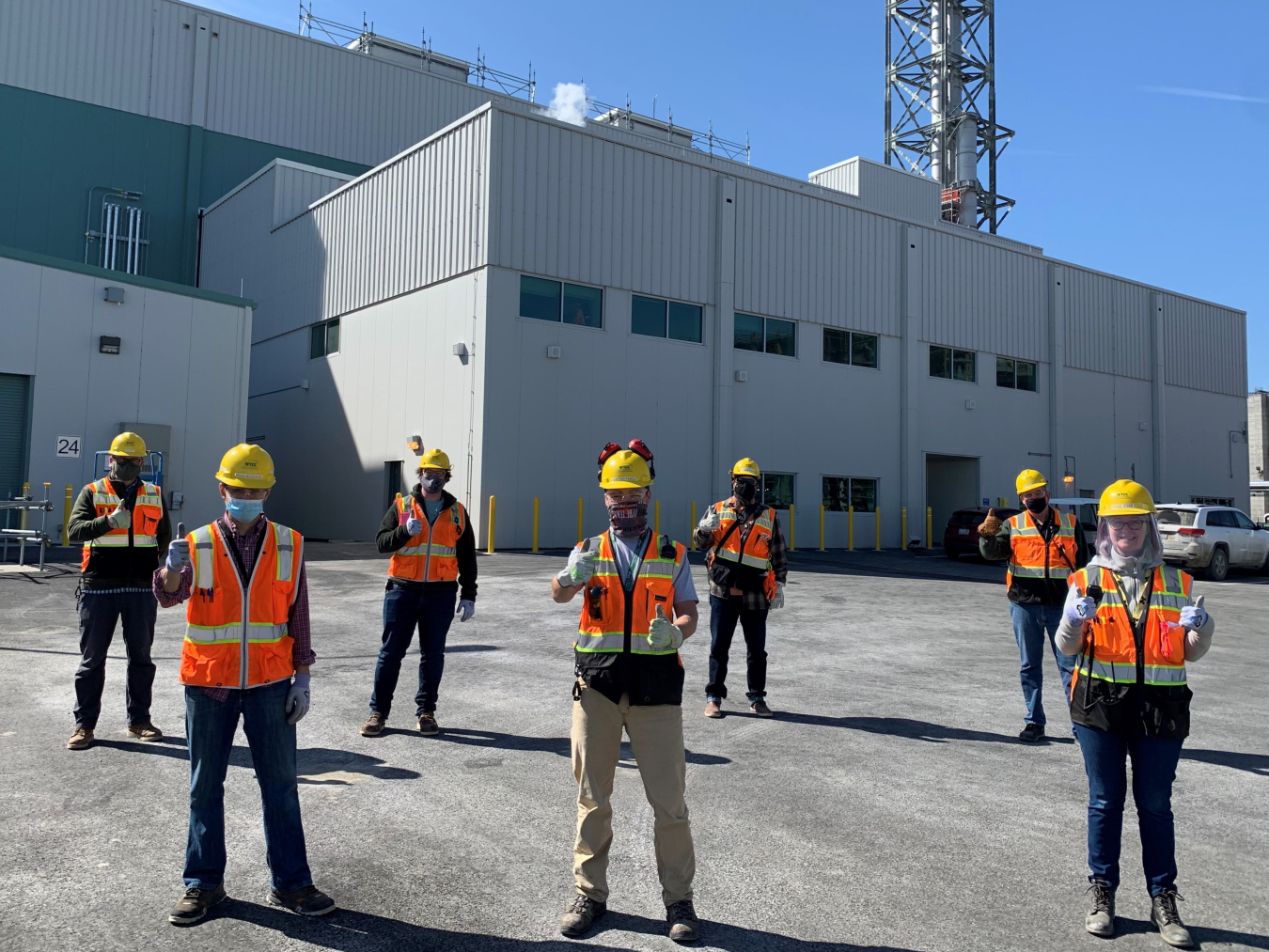The EM Hanford Waste Treatment and Immobilization Plant (WTP) team is on track to conduct the next phase of safety testing inside the Low-Activity Waste (LAW) Facility, now that initial testing of its two “melter trains” is complete.
Office of Environmental Management
April 20, 2021
Hanford’s Waste Treatment and Immobilization Plant startup team gives a thumbs up for completing initial testing of equipment and systems, called melter trains, that support huge melters in the plant’s Low-Activity Waste Facility, marking another step toward treating tank waste. The team members include, front row, from left, Kevin Krylowski, Clayton Parent, and Annie Fyfe; back row, from left, Dan Nauts, Bryan Jewell, Casey Downs, and Joseph Kemper.
RICHLAND, Wash. – The EM Hanford Waste Treatment and Immobilization Plant (WTP) team is on track to conduct the next phase of safety testing inside the Low-Activity Waste (LAW) Facility, now that initial testing of its two “melter trains” is complete.
The term melter train refers to systems and custom-made equipment connected to melters that will vitrify, or immobile in glass, millions of gallons of radioactive tank waste. In late March, workers finished testing these systems for feeding waste to the melters, operating the melters, and treating vitrification exhaust.
“Plant staff can now begin the second phase of safety testing of the melter trains, and this moves us closer to heating up the first melter for Direct-Feed Low-Activity Waste (DFLAW) later this year,” said Mat Irwin, Office of River Protection deputy assistant manager for the plant. “These are important steps in plant startup testing and preparing us for a loss-of-power test before we heat up the melter.”
The loss-of-power test will demonstrate the team is able to protect the melter by putting the LAW Facility into safe condition and restoring power before any damage to the melter occurs.
The DFLAW process is a system of interdependent projects and infrastructure improvements, managed and highly integrated as a program, that must operate together to vitrify low-activity waste.
The team is currently checking the primary exhaust, or off-gas, system’s protection features, known as safety instrumented function testing. The testing ensures the built-in secondary safety systems’ hardware and software work together and function correctly.
“Starting this next phase of function testing gets us one step closer to making glass,” said Mark Moyer, plant test lead for Waste Treatment Completion Company, subcontractor to WTP contractor Bechtel National Inc. “It’s a huge accomplishment for our team to get to this phase of testing, and it’s a tribute to all of the engineering, procurement, and construction work that came before.”
Safety instrumented function testing is expected to conclude by October.
The WTP facilities can be viewed using the self-guided Hanford Virtual Tour.
To receive the latest news and updates about the Office of Environmental Management, submit your e-mail address.

